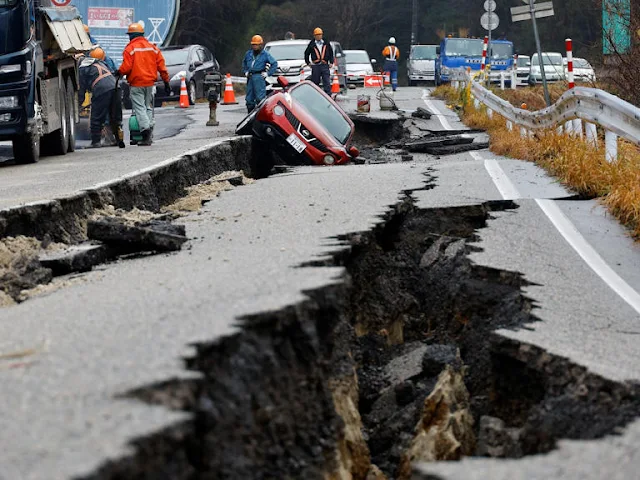Japan continues to grapple with the aftermath of a recent powerful earthquake, showcasing its ongoing efforts to manage natural disasters. With a history of such occurrences, Japan stands out as one of the most well-prepared nations for emergencies, thanks to its sophisticated alert system, stringent building codes, and a population that is well-trained and ready to respond.
Despite the Noto Peninsula being hit by its strongest earthquake in a century, the casualties remain surprisingly low. The 7.6 magnitude quake, which struck central Japan on January 1, caused significant damage, including building collapses, landslides, and fires, and even led to the emergence of new coastlines due to the earth's movement.
Comparatively, earthquakes of similar magnitude have proven to be devastating elsewhere. For instance, a pair of tremors in Turkey and Syria resulted in over 56,000 deaths, while in Haiti in 2010, a 7.0 quake claimed the lives of up to 300,000 people. Similarly, in Pakistan in 2005, a 7.6 magnitude earthquake caused the deaths of at least 79,000 individuals.
In contrast, as of the latest reports, the death toll from Japan's recent earthquake stands at 94, showcasing the effectiveness of Japan's preparedness measures. This resilience is not accidental, as evidenced by Japan's response to the massive 2011 earthquake, which triggered a tsunami and a nuclear meltdown. Despite over 18,000 deaths, Japan's readiness and quick action saved many lives.
The situation on the Noto Peninsula remains critical, with over 200 people still unaccounted for and 30 villages cut off. The city of Wajima, already struggling with the aftermath, is facing shortages of food and water for around 11,000 evacuees.
Japan's ability to withstand earthquakes is due to a combination of factors. The country has some of the strictest building codes globally, focusing on earthquake-resistant construction techniques. For instance, buildings are designed to sway with the seismic movements, while rubber and steel pads, along with hydraulic shock absorbers, help mitigate shaking in tall structures. Many older buildings have been retrofitted to enhance their resilience.
Moreover, Japan places a strong emphasis on emergency preparedness as a cultural norm. Regular drills and simulations, starting from schools and extending to the broader community, ensure that people know how to respond during emergencies. The government's early warning systems, such as the J-Alert system, provide critical seconds to minutes of advance notice, aiding in evacuation efforts and preventing train accidents, among other benefits.
Japan's lessons in disaster management serve as a model for other nations. By investing in infrastructure, enforcing strict building codes, and fostering a culture of preparedness, Japan has significantly reduced the impact of natural disasters, setting an example for the world to follow.


